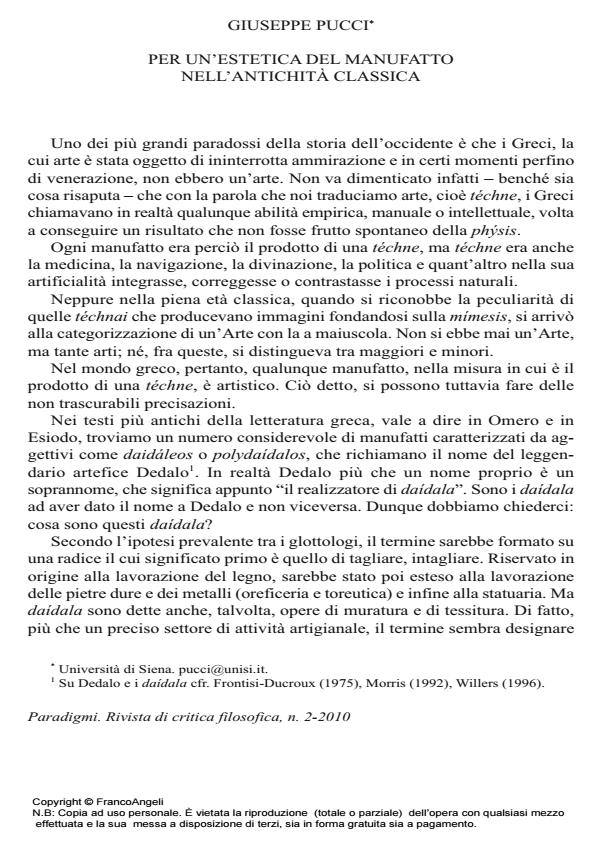Towards an aesthetics of artifacts in Classical Antiquity
Journal title PARADIGMI
Author/s Giuseppe Pucci
Publishing Year 2010 Issue 2010/2 Language Italian
Pages 9 P. 127-135 File size 321 KB
DOI 10.3280/PARA2010-002010
DOI is like a bar code for intellectual property: to have more infomation
click here
Below, you can see the article first page
If you want to buy this article in PDF format, you can do it, following the instructions to buy download credits

FrancoAngeli is member of Publishers International Linking Association, Inc (PILA), a not-for-profit association which run the CrossRef service enabling links to and from online scholarly content.
In ancient Greece téchne referred to the particular skill of an artisan. Any handmade product of a téchne could be called "artistic". In the archaic age, however, some objects called daídala - a class that included statues - were credited with a special power of enchantment. This belief may fit into Alfred Gell’s theory, based on the concept of agency, of which art objects are indexes. The statue of Phrasikleia (sixth century B.C.) provides an example of those social, ideological and aesthetic relationships that Gell defines as art nexus. Parole chiave: Agency, Antropologia, Arte, Estetica, Grecia, Téchne. Key words: Aesthetics, Agency, Anthropology, Art, Greece, Téchne.
Giuseppe Pucci, Per un’estetica del manufatto nell’antichità classica in "PARADIGMI" 2/2010, pp 127-135, DOI: 10.3280/PARA2010-002010